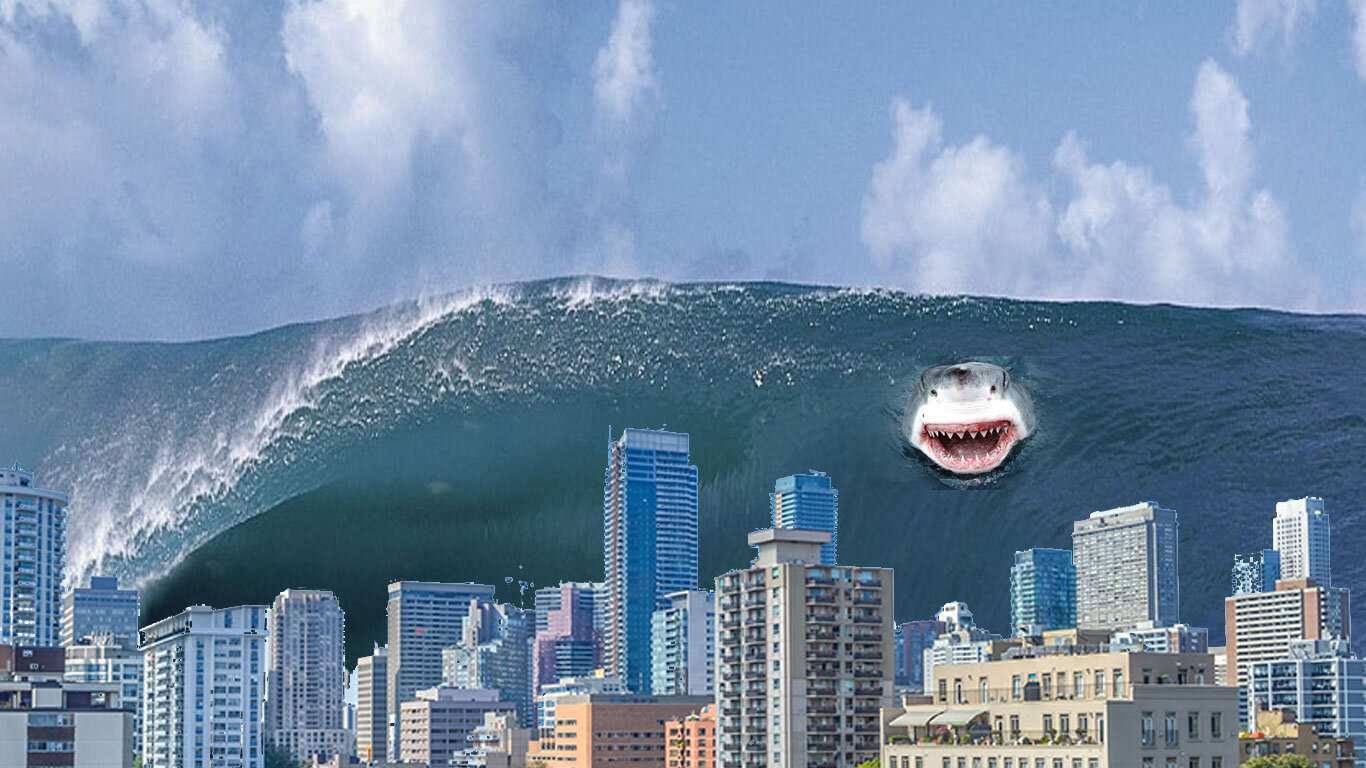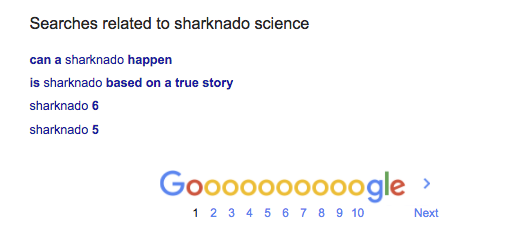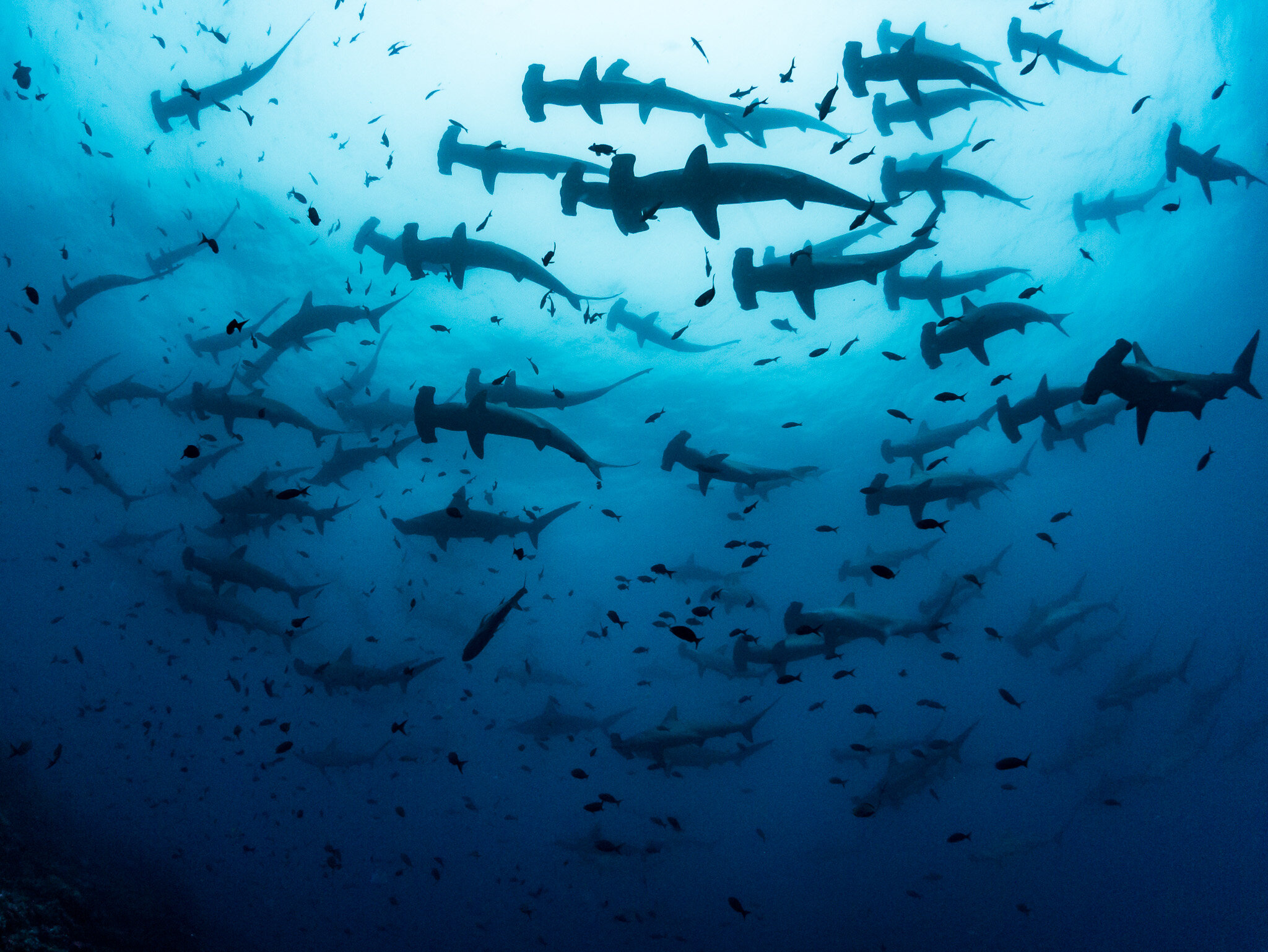Shark Tsunamis: Are They Possible?
Dr. Simon J Pierce co-founded the Marine Megafauna Foundation, leads their flagship Global Whale Shark Program, and serves as a member of the IUCN Shark Specialist Group. He’s also an award-winning marine wildlife photographer.
Shark Tsunamis: Are They Possible? Let’s call them Sharknamis, everyone’s thinking it anyway.
So I got this email:
Hello! My name is Brianna and I’m from Colorado. I’m going to try to get straight to the point so that I don’t waste your time, Mr. Pierce. A coupe of months ago, I was in my first period Geography class when somehow the girl who sits next to me and I got into a discussion about Shark Tsunamis.
Please, don’t close this email I realize how completely dumb this sounds. So, basically this girl was very, very convinced that Shark Tsunamis were possible, I’ll try my best to describe what she’s thinking. She believes that a fully grown, adult, shark could be swimming, in a huge tsunami, still be alive, with its mouth open to catch fish. I’m not super sure if that’s descriptive enough, but I think you get what she’s saying.
My thought is that for a shark to be in a tsunami, it would need to be a baby shark, and it would have to be dead, and that even if an adult shark were to somehow get caught in a tsunami it would die because of the immense pressure. I obviously don’t have a degree, so I could be wrong. She hasn’t left me alone with this for actual months and i really want to be able to give her some sort of reliable explanation so that i can focus on my French work without her showing me a picture of a shark tsunami that she drew (she sits next to me in French) I realize that this is probably a complete and utter waste of your time, but please reply if you get a chance, are Shark Tsunamis scientifically possible?
Thank you so much.
Sincerely, Brianna
Obviously, the possibility of Shark Tsunamis required my full and immediate attention. Far more important than the annual report I’m supposed to be writing for four months ago, or my inbox, in which the oldest email dates back to December 2017, or… um.
Actually I should probably get onto those.
Later.
Now, shark-related natural events are not unheard of…… and there is clearly some public interest in such phenomena:
I hadn’t previously considered the possibility of Shark Tsunamis, so I also referred to Google for more information on the topic.
I got this picture back. Ah, the internet. It giveth me so much.
Most of the top pages related to “Bait”, a horror movie from 2012.
The IMDB summary:
A freak tsunami traps shoppers at a coastal Australian supermarket inside the building – along with 12-foot Great White Sharks.
A quick look on Rotten Tomatoes provided deeper insight:
“This likeable trash occasionally outsmarts more moneyed Hollywood fish features.” – Guy Lodge (Variety)
“Perhaps a clever advertisement for online grocery shopping.” – Philip French (Observer)
“Jaws it ain’t.” – Derek Malcolm (London Evening Standard)
“You’ve seen this movie without even seeing it.” – David Jenkins (Little White Lies)
Sounds alright actually.
That aside, there was a distinct lack of Shark Tsunami information online. I can see why Brianna was underwhelmed by the quality of scholarship on offer.
That’s okay. She’s come to the right person. In the immortal words of Mark Watney, “I’m going to have to science the shit out of this.”
Are Shark Tsunamis scientifically possible?
Let’s go ahead and call them Sharknamis. We’re all thinking it anyway.
A Sharknami will require both sharks, and a tsunami. We can treat those two factors independently.
First, the sharks. Brianna has referred to a specific situation, i.e. a fully grown, adult shark, swimming with its mouth open in a tsunami, eating fish. That’s helpful for refining our analysis.
I think it’s reasonable to assume that, if there’s a dense group of coastal sharks, it’ll increase the likelihood of at least one shark being picked up by a wave. Therefore, we’ll go ahead and focus on groups of sharks.
Now, #sharkfact time: a group of sharks isn’t *necessarily* a school. Wikipedia provides a good definition of fish schooling: “the group is swimming in the same direction in a coordinated manner.” Some sharks do school, such as scalloped hammerhead sharks in the Galapagos.
A huge school of scalloped hammerhead sharks at Darwin Arch, a dive site off Darwin Island in the far north of the Galapagos Islands
An aggregation of sharks, on the other hand, is “the general term for any collection of fish that have gathered together in some locality” (Wikipedia again). Whale sharks, for instance, aren’t known to school, but they definitely aggregate.
The aerial photos below are from the paper by Rafael de la Parra Venegas and colleagues that first described the annual “Afuera” whale shark aggregation north of Isla Mujeres in Mexico. The sharks come together to feed on tuna spawn. The upper shot (A) shows 220 sharks, with 68 in the photo below (B).
As Brianna is from the US, a more ‘local’ example that immediately springs to mind is the huge seasonal aggregation of blacktip sharks off the Florida coast, where around 12, 000 sharks loiter off Palm Beach County each winter.
Here’s an aerial photo of about 1, 678 sharks from a paper describing that phenomena.
There’s also a leopard shark aggregation off La Jolla, near San Diego, each year. Over a hundred adult sharks can be seen just off the shore. The area is slightly warmer than other beaches along the coast, and the warm water speeds up the pregnancies of these almost exclusively female sharks.
Small white sharks use the Los Angeles area as a nursery, too. They’re not fully grown though, so they don’t really count. Happy news though: improved fisheries management is helping both leopard and white shark numbers to recover along the California coast. Very cool.
While I was doing a quick Google Scholar search on US shark aggregations, I also saw a result from Canada that seems worth mentioning: around 20,000 salmon and blue sharks were seen north of Vancouver Island during marine mammal surveys in 2004-06. No photos, but whoa.
Anyway, in Sharknami terms, there are clearly sharks that are quite comfortable in coastal areas, and hang out in large numbers right off the beach. Blacktip and leopard sharks both eat fish so, yes, either could plausibly be hunting within a giant wave.
Okay then, onto our second factor: the tsunami.
National Geographic provides a handy summary of tsunami facts. Briefly, a tsunami is a series of ocean waves, typically created when a major earthquake occurs underwater at a tectonic plate boundary. The earthquake displaces the water above it, creating fast-moving waves traveling at up to ~800 km an hour.
As they reach shallow water, they can become absolutely massive: up to about 30 m high.
(Animation by Régis Lachaume.)
Most tsunamis (80%) occur in the Pacific Ocean due to all the geological activity in the area. The Californian coast is affected by tsunamis. La Jolla itself, where the leopard sharks aggregate, lies on the seismically active Rose Canyon Fault.
The final piece of the Sharknami puzzle, then, is whether large fish could really be picked up and carried by a tsunami.
Science writer Jason Goldman investigated the effects on animals of the 2011 tsunami, originating from an earthquake in Japan, that famously resulted in the meltdown of the Fukushima nuclear reactor.
Pete Leary, a wildlife biologist, was stationed on Midway Island in the Pacific and was one of the ‘wildlife first responders’ for affected animals in the area. He reported that “there were dead fish by the hundreds up in the middle of the island” when their team was checking on albatross chicks at Eastern Island. Two sea turtles had also been washed ashore. Fortunately, both were alive and could be safely returned to the water.
I’m going to call it. Yes. A Sharknami is scientifically possible.
Brianna, I hope you can go back to focusing on your French class now. If your friend would like to draw scientifically-accurate pictures, she should probably focus on leopard sharks (which, fortunately, are very pretty) surfing towards San Diego.
Le meilleur,
Simon.

















